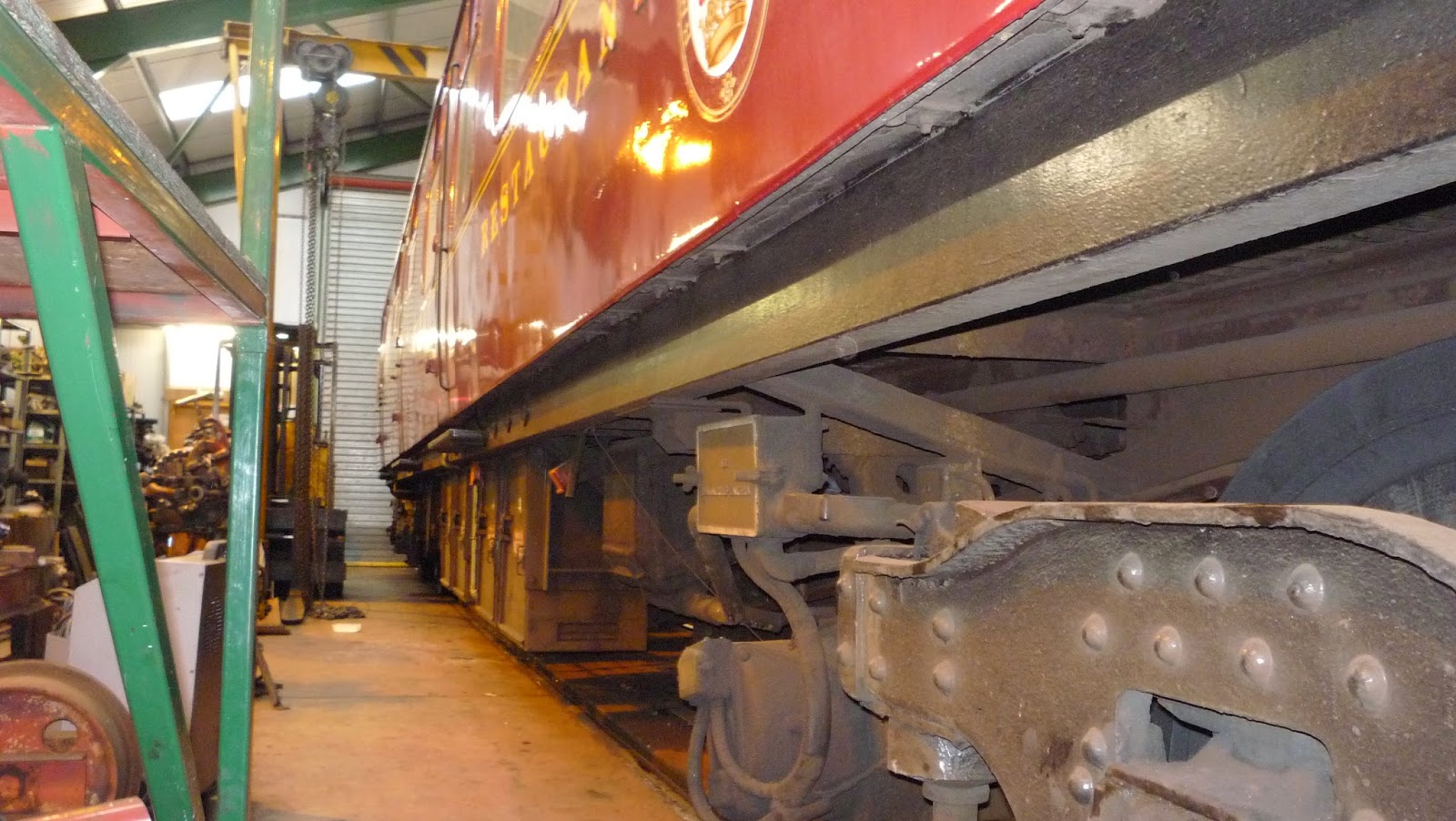Mark 1 SO, 4477 otherwise known as the diner, has had the vestibule completed. The bright red lino will soon tone down.
Another view from the corridor connection.
Mark 1 RU, number 1928 came back into the shed to be finished off.
The gas man arrives. A mandatory job this time of year is the gas safe certification of the RU and the officers saloon. Many thanks to Kevin at Claremont catering for once again performing this task. I am pleased to announce that we passed.
The saloon end buck eye coupling failed its measurement test and had to be replaced. This proved to be very hard to remove, pictured here is the retaining pin after it had finally been removed. That's quite a kink in it.
Bill Dodds measuring the gap between the webs on the errant buck eye.
This is the works plate from one of the Gresley bogies fitted to the mark 1 RU number 1928. it states that it was built at Leeds Forge in 1929. These were fitted by BR when they were trying to stabilise the ride. There is one school of thought that the bogies were copies built by BR, clearly not.
The first class compartments have all received a new carpet
This is the anti guard bolt! the door runner at the top is fixed to a piece of wooden frame. This frame has dropped and causes the door to come off its runners if closed. The repair involves taking the roof down, however with the start of the season imminent, we haven't the time.
Perhaps anti guard is going too far, its an anti anybody closing it. To keep the guards happy we have removed their sliding door and greased the runners, it doesn't squeak any more.
The ground frame that has been in the shed for alterations has been installed. Here Georgie is taking it to Aviemore North for installation.
The frame in position
A close up view
The last shunt
Henry taking mark 2 TSO 5149 back to the storage shed.
The set arriving back from its deep clean at Boat

























































